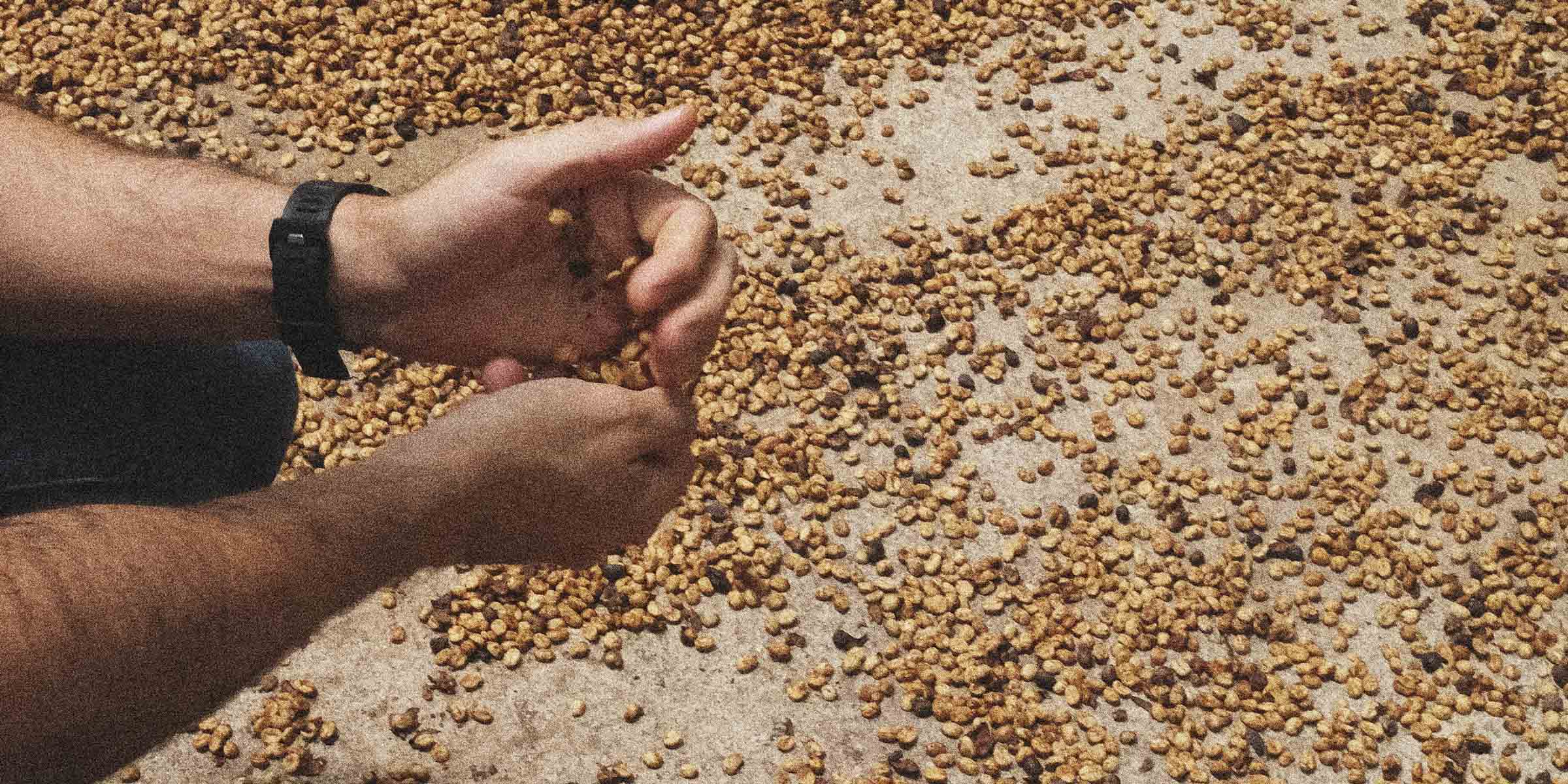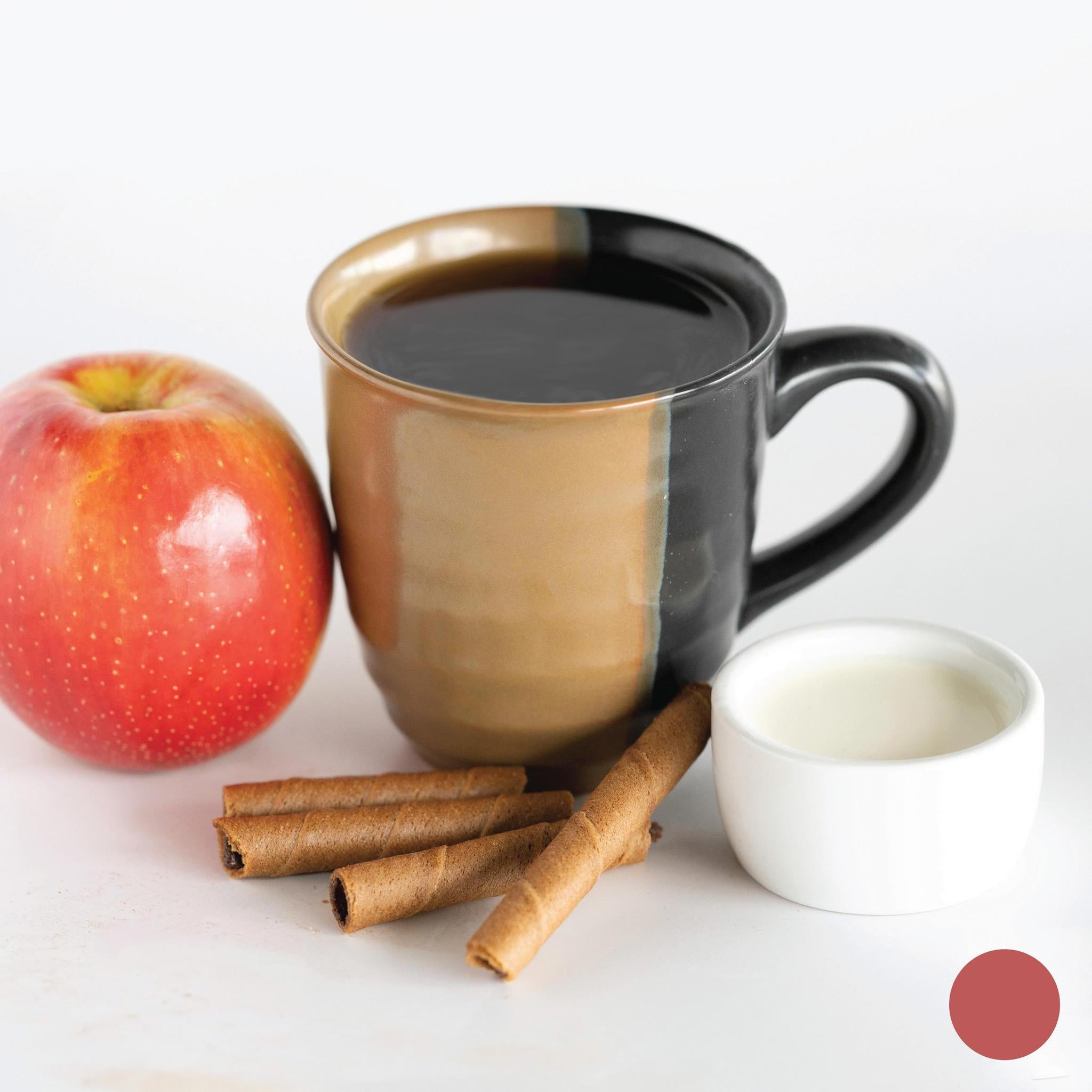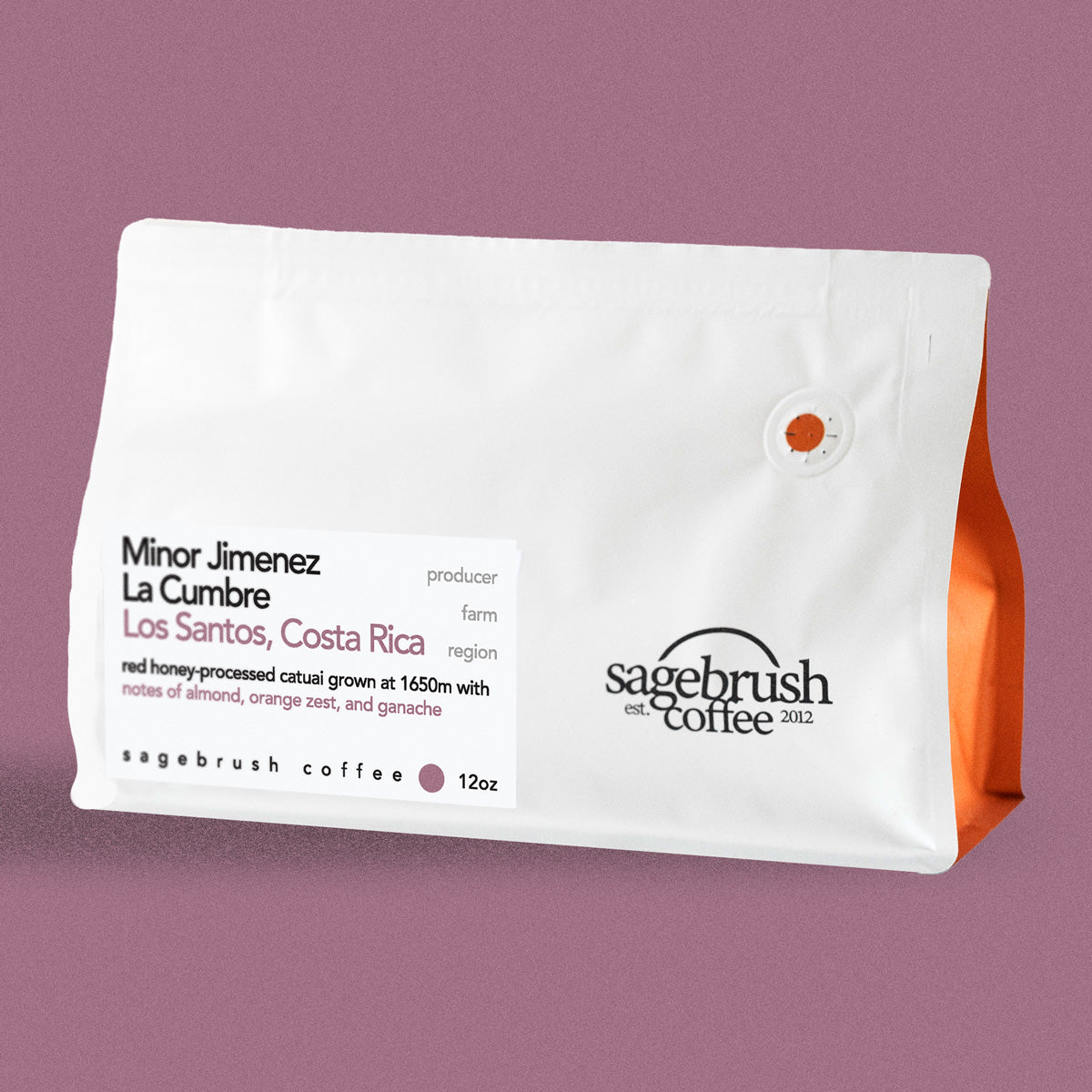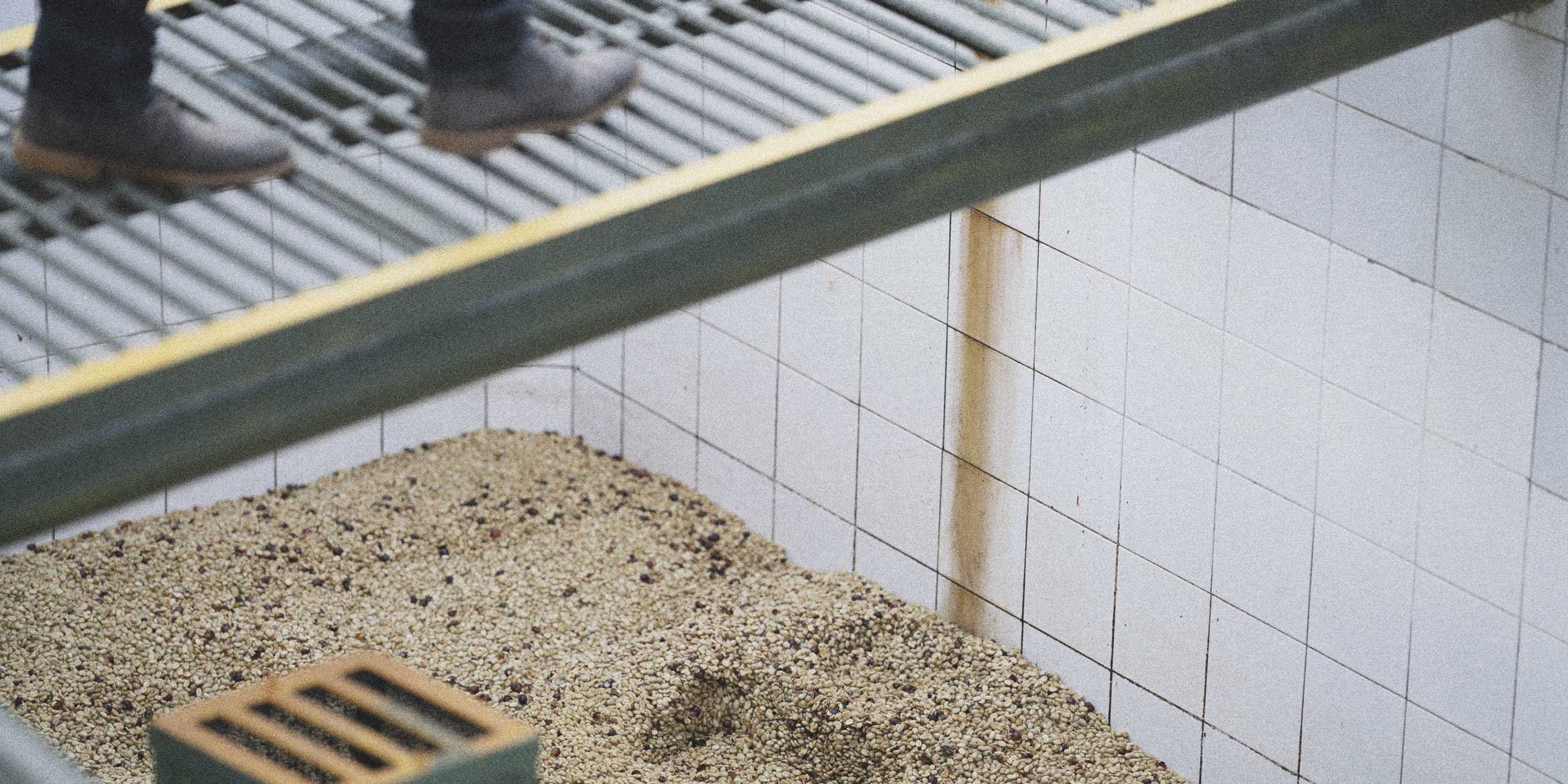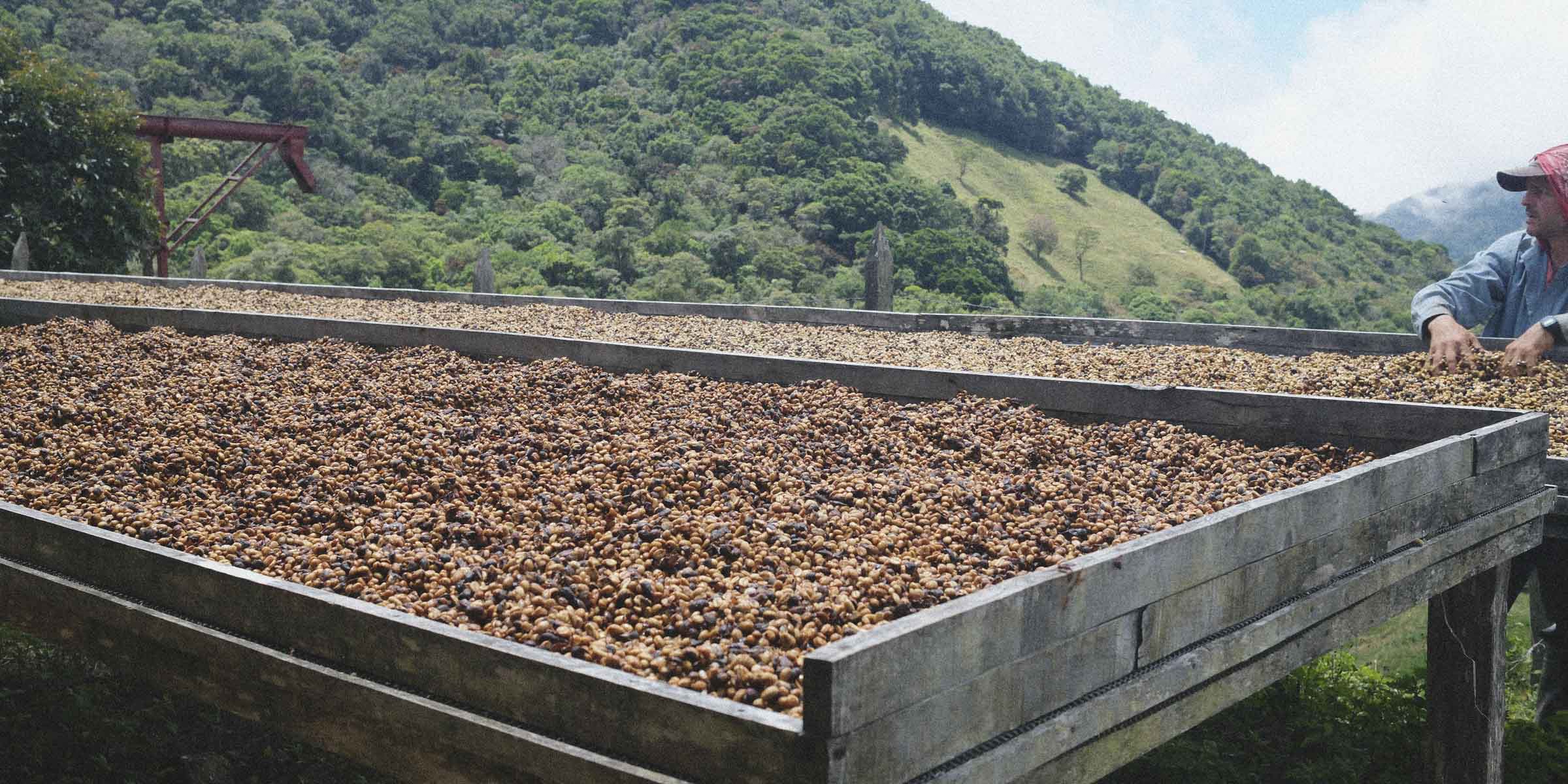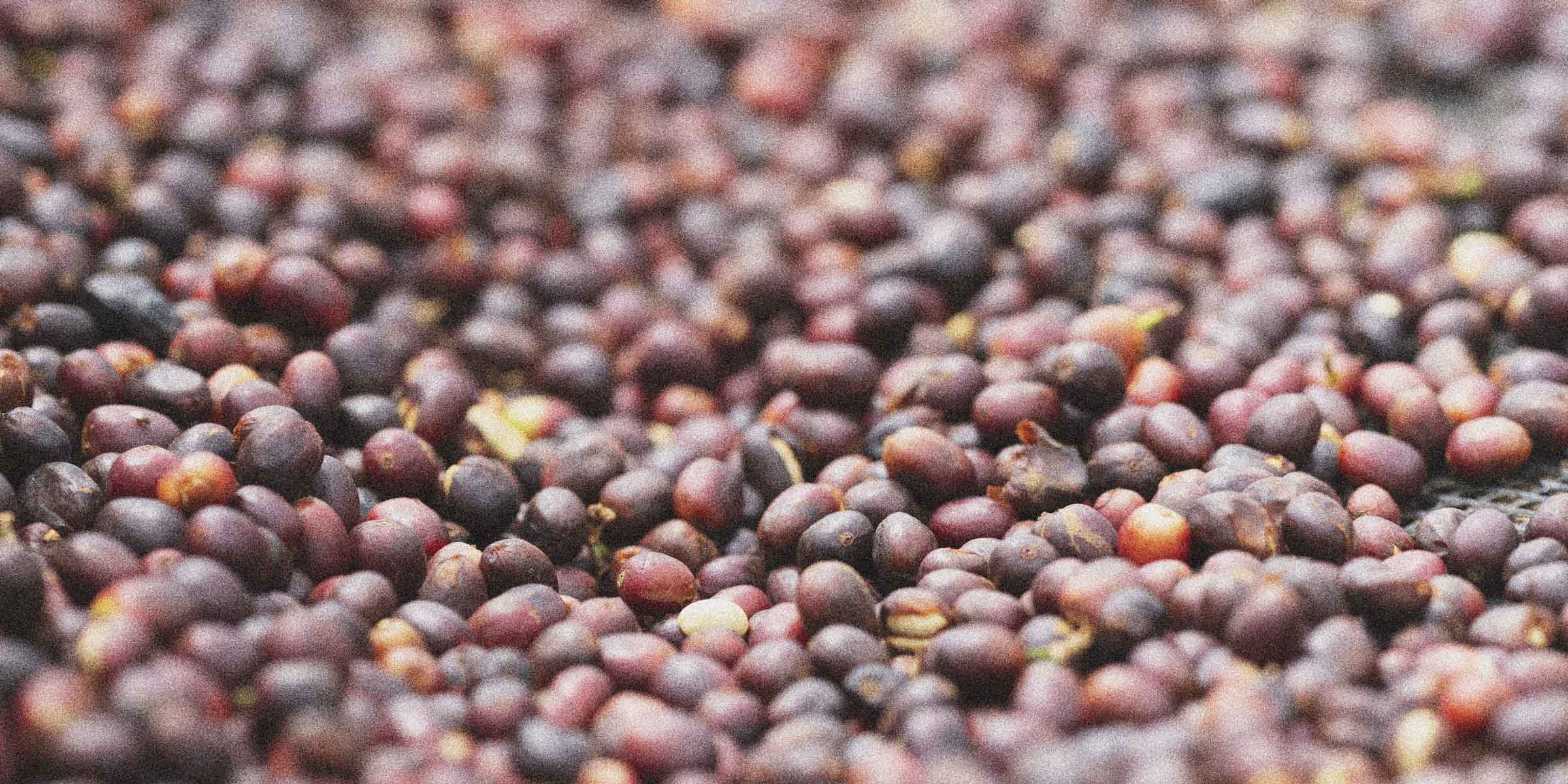Coffee Processing Overview •
Read our Processing articleCoffee Processing Guide: Honey Processed - The Sweet Middle Ground
What Is Honey Processing
Don't be fooled by the name, there's no honey involved in honey processed coffee. The term comes from the sticky, honey-like mucilage layer that coats coffee seeds when the outer cherry skin is removed.
This processing method sits perfectly between washed and natural methods, creating a unique flavor profile that has captured the attention of specialty coffee lovers worldwide.
But before we dive into the details, let's clarify what we mean by processing. Coffee processing is how producers transform ripe coffee cherries into the green beans at the wet mill. Every method involves removing layers, skin, fruit pulp, mucilage, and parchment, from the seed. What distinguishes each method is when and how these layers are removed, particularly when the beans are dried.
The Honey Process Explained
In honey processing, most of the time, coffee cherries are first depulped, mechanically removing the outer skin, but the crucial difference is what happens next. Instead of washing away the sticky mucilage layer like in washed processing, or leaving everything intact like natural processing, honey processed beans are set out to dry with their mucilage still clinging to them.
This exposed fruit layer undergoes transformations in the sun. As the beans dry, the mucilage oxidizes and ferments, changing color from golden yellow to red to nearly black. This color progression isn't just visual, it reflects chemical changes that directly impact flavor.
The amount of mucilage left on determines both the honey's classification and its flavor intensity. Producers control this by adjusting their depulping machines, creating a spectrum of honey processes.
The Rainbow of Honey Processing
Not all honey processing is the same. The coffee industry has developed a color-coded system based on how much mucilage remains and how the beans are dried:
White and Yellow Honey: These have the least mucilage, about 10-20% remaining. They're turned frequently during drying and typically dried quickly, sometimes with mechanical assistance. The result is cleaner, more tea-like coffees with subtle sweetness.
Red Honey: With about 50% mucilage remaining, red honey coffees dry more slowly and are turned less frequently. This creates more fermentation, developing stone fruit notes and medium body.
Black Honey: The most intense version, with 50-100% mucilage left intact. These beans dry slowly in shade or covered areas, turned minimally. The extended fermentation produces heavy body, intense sweetness, and complex fruit notes, almost wine-like in character.
Each color represents hours of careful decision-making by producers who must balance fermentation with the ever-present risk of over-fermentation or mold.
Why Producers Choose Honey Processing
Honey processing offers practical advantages that make it attractive to producers, especially in water-scarce regions. Unlike washed processing, which requires significant water for fermentation and washing, honey processing uses minimal water, just enough for depulping.
The method also allows producers to create distinct flavor profiles without the higher risks associated with natural processing. It's a middle ground that can command premium prices while maintaining more control over the outcome than leaving whole cherries to dry.
However, honey processing demands skill and attention. The sticky beans must be turned carefully to prevent clumping and ensure even drying. Weather becomes critical, unexpected rain can ruin an entire batch. The drying process typically takes 10-15 days, during which producers constantly monitor moisture levels and adjust drying conditions.
The Honey Processing Flavor Experience
When handled correctly, honey processed coffees deliver remarkable sweetness, think biting into a crisp apple or ripe stone fruit. The method produces coffees with more body than washed processing but more clarity than naturals.
The flavor profile typically includes pronounced sweetness, fruit-forward notes ranging from tropical to stone fruits, balanced acidity that's less sharp than washed coffees, and a syrupy, coating mouthfeel. Many coffee drinkers find they can enjoy honey processed coffees black, thanks to their natural sweetness.
The complexity varies with the honey color. Yellow honeys might offer delicate florals and citrus. Red honeys bring stone fruits and caramel. Black honeys can taste like fruit preserves or wine.
The Art and Science of Honey
Honey processing represents coffee's evolution, where tradition meets innovation. It's a method that requires producers to be part artist, part scientist, carefully orchestrating fermentation to create specific flavor outcomes.
For specialty coffee producers, honey processing has become a creative tool, allowing them to highlight their terroir while adding processing-derived complexity. It confirms what specialty coffee has always maintained: every decision from cherry to cup matters.
The next time you see "honey processed" on a bag, know that you're about to taste the result of careful balance, not too washed, not too natural, but something uniquely sweet in between.
Featured collection
Anny Ruth • Yellow-Honey-Processed Red-Bourbon
Minor Jimenez • Red-Honey-Processed Catuai


